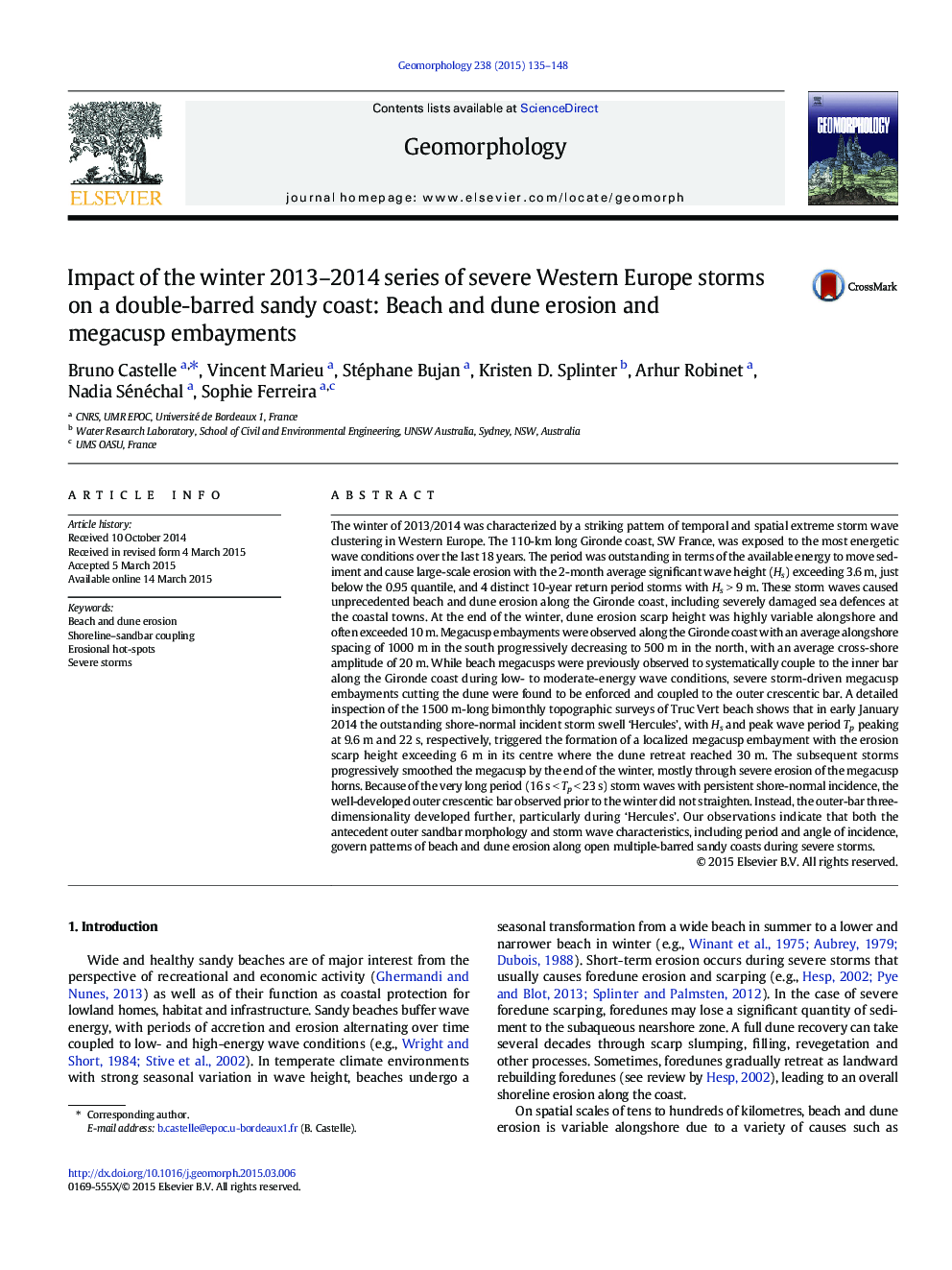| Article ID | Journal | Published Year | Pages | File Type |
|---|---|---|---|---|
| 4684306 | Geomorphology | 2015 | 14 Pages |
•The winter 2013/2014 extreme storm waves caused unprecedented beach and dune erosion.•The high-energy normally-incident long-period swell Hercules was outstanding.•We combine bimonthly topo surveys and a post-winter 110-km long shoreline survey.•Hercules triggered severe megacusp embayments and dune erosional hot-spots.•Antecedent outer-bar morphology and storm wave characteristics govern erosion pattern.
The winter of 2013/2014 was characterized by a striking pattern of temporal and spatial extreme storm wave clustering in Western Europe. The 110-km long Gironde coast, SW France, was exposed to the most energetic wave conditions over the last 18 years. The period was outstanding in terms of the available energy to move sediment and cause large-scale erosion with the 2-month average significant wave height (Hs) exceeding 3.6 m, just below the 0.95 quantile, and 4 distinct 10-year return period storms with Hs > 9 m. These storm waves caused unprecedented beach and dune erosion along the Gironde coast, including severely damaged sea defences at the coastal towns. At the end of the winter, dune erosion scarp height was highly variable alongshore and often exceeded 10 m. Megacusp embayments were observed along the Gironde coast with an average alongshore spacing of 1000 m in the south progressively decreasing to 500 m in the north, with an average cross-shore amplitude of 20 m. While beach megacusps were previously observed to systematically couple to the inner bar along the Gironde coast during low- to moderate-energy wave conditions, severe storm-driven megacusp embayments cutting the dune were found to be enforced and coupled to the outer crescentic bar. A detailed inspection of the 1500 m-long bimonthly topographic surveys of Truc Vert beach shows that in early January 2014 the outstanding shore-normal incident storm swell ‘Hercules’, with Hs and peak wave period Tp peaking at 9.6 m and 22 s, respectively, triggered the formation of a localized megacusp embayment with the erosion scarp height exceeding 6 m in its centre where the dune retreat reached 30 m. The subsequent storms progressively smoothed the megacusp by the end of the winter, mostly through severe erosion of the megacusp horns. Because of the very long period (16 s < Tp < 23 s) storm waves with persistent shore-normal incidence, the well-developed outer crescentic bar observed prior to the winter did not straighten. Instead, the outer-bar three-dimensionality developed further, particularly during ‘Hercules’. Our observations indicate that both the antecedent outer sandbar morphology and storm wave characteristics, including period and angle of incidence, govern patterns of beach and dune erosion along open multiple-barred sandy coasts during severe storms.
Graphical abstractFigure optionsDownload full-size imageDownload as PowerPoint slide
